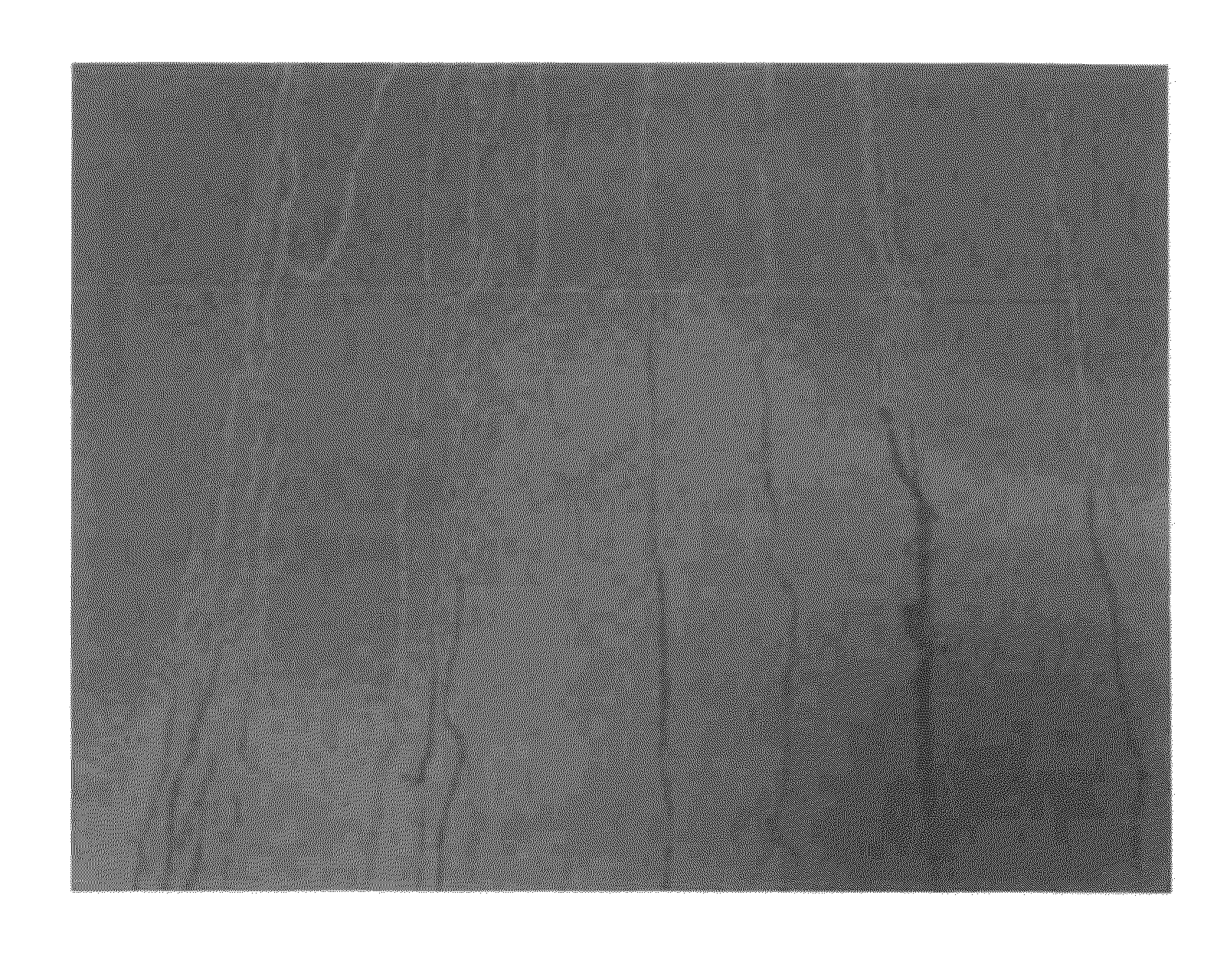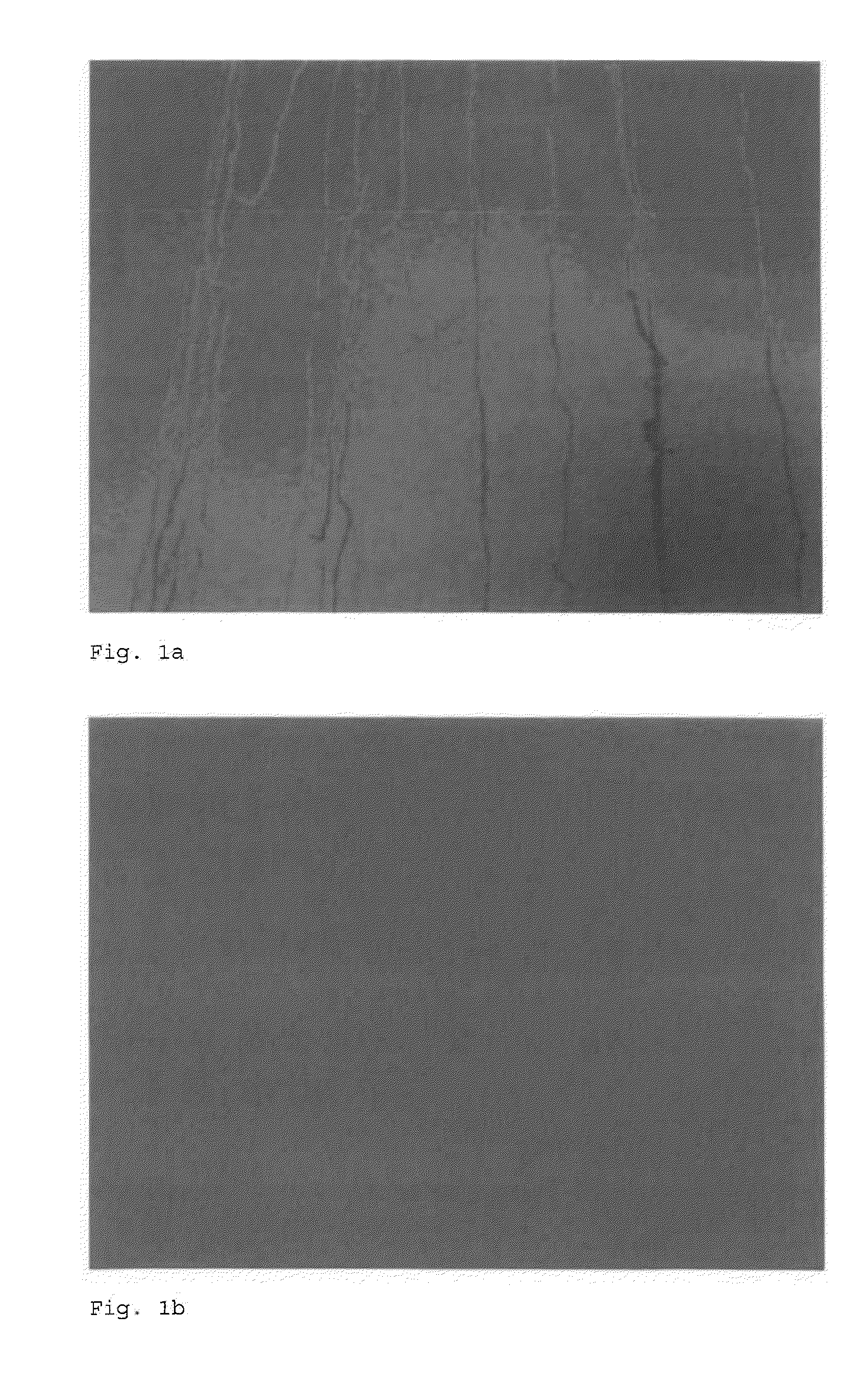Method for producing particles electrostatically
a technology of electrostatic production and particle, which is applied in the field of electrostatic production of particle, can solve the problems of unreported application of the technique in the paper and board industry, unreported and unreported, and achieve the effects of improving the coverage of the deposited surface, enhancing filtering properties, and high particle yield
- Summary
- Abstract
- Description
- Claims
- Application Information
AI Technical Summary
Benefits of technology
Problems solved by technology
Method used
Image
Examples
example 1
[0062]The same intermediate composition as used in comparative example 1 was foamed mechanically using a mixer. The volume increased to over double-fold, as air was incorporated into liquid phase. Thus, the foamed medium formed comprised gas in an amount of about 50%-60% by volume of the total medium. This foamed medium was electro-spun from the nozzles used in comparative example 1 (distance about 50 mm, voltage about 40 kV). The coat weight was kept even in both experiments. The formed particles were deposited on a paperboard of 240 g / m2.
[0063]The resulting spread was again assessed visually and by taking photographs under UV light. FIG. 1b shows a photo of the coated paper board taken under UV light. As can be seen in FIG. 1b, the spread uniformity was evidenced as no spun lines from the nozzles were visible on the paper board. From each nozzle, several filaments were ejected towards the collector. The foam was also easier to pump and feed to the nozzles, which contributed to eas...
example 2
[0064]An intermediate composition comprising mixture of titanium dioxide, polyvinyl alcohol, polyethylene oxide, (TiO2+PVA+PEO), as compounds to be formed into particles; sodium dodecyl sulphate (SDS) as process aid and water as carrier was prepared. The concentrations of ingredients in a batch of 500 g, were PVA 6.4%, PEO 1.0%, SDS 3 drops and water to balance. The intermediate composition was foamed mechanically using a mixture. 9 g of the foamed medium was spread on a metal plate as a 10 cm×10 cm area and electro-spun (distance about 50 mm, voltage about 40 kV) from the foam surface. Again, the particles formed were deposited on a substrate of paperboard (240 g / m2).
[0065]The particles (here fibres) were formed directly form the free surface of the foam, i.e. without any nozzles or the like. The density of fibres leaving the foam surface was high. As the experiment was conducted till the end, all the foam was consumed and spun into fibres without any substantial reagent loss. The ...
PUM
| Property | Measurement | Unit |
|---|---|---|
| spherical diameter | aaaaa | aaaaa |
| diameter | aaaaa | aaaaa |
| diameter | aaaaa | aaaaa |
Abstract
Description
Claims
Application Information
 Login to View More
Login to View More - R&D
- Intellectual Property
- Life Sciences
- Materials
- Tech Scout
- Unparalleled Data Quality
- Higher Quality Content
- 60% Fewer Hallucinations
Browse by: Latest US Patents, China's latest patents, Technical Efficacy Thesaurus, Application Domain, Technology Topic, Popular Technical Reports.
© 2025 PatSnap. All rights reserved.Legal|Privacy policy|Modern Slavery Act Transparency Statement|Sitemap|About US| Contact US: help@patsnap.com


